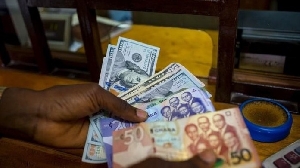For a second consecutive month, the consumer inflation has recorded an increase, this time to reach the highest rate recorded since the rebasing of inflation in August this year.
According to the latest data released by the Ghana Statistical Service (GSS) on Wednesday, the year-on-year inflation rate for November rose to 8.2 percent, form 7.7 percent recorded for October, 2019. The 50-basis point rise is easily the biggest month on month rise since rebasing of consumer inflation computations in August brought headline inflation down by 160 basis points to 7.8 percent, from 9.4 percent in July. Since then, the biggest change, either upwards or downwards has been 10 basis points.
The increase is expected however, as inflation customarily rises towards the end of each year, propelled by the traditional spike in consumerism which inevitably generates demand pull inflation. Indeed, economists agree that the increase would have been even steeper if not for the tight monetary stance of the Bank of Ghana, coupled with government’s spending cut backs, in order to say within its self-imposed 5 percent cap on its fiscal deficit.
The Government Statistician, Professor Samuel Kobina Annim stated that inflation was predominantly driven by Food and Transportation, even though the contribution of Transport went down.
The Consumer Price Index (CPI) measures proportionate changes in the prices of a fixed basket of goods and services that households in Ghana consume.
The Food and Non-alcoholic beverages division, which accounts for roughly half of the basket of goods used to compute inflation, recorded a year-on-year inflation rate of 8.4 percent. This is 1.4 percentage points higher than what was recorded in October 2019 (7.0 percent).
However, between October 2019 and November 2019, the price level of Food and Non-alcoholic beverages went up slightly by 1.1 percent. This rise was predominantly driven by an increase in price levels of Vegetables.
Professor Annim revealed that the non-food year-on-year inflation for November 2019 was 8.0 percent, down from 8.2 percent recorded in October 2019.
The increase in the rate of inflation is likely to impact on the government treasury market, where it is expected that yields on the short-end of the yield curve may rise further.
For this week, yields recorded a drop, as the 91-Day and 182-Day increased by one basis point (bps) to 14.69 percent and 15.15 percent respectively from 14.68 percent and 15.14 percent last week.
Non-food subclasses with the highest year-on-year inflation include: Narcotics (46.7 percent), Postal and courier services (32.5 percent), Jewellery and watches (22.1 percent), Repair and hire of furniture (21.3 percent), Solid fuels (17.2 percent), Passenger transport by road (15.0 percent).
For the first time since the rebasing of the CPI, inflation for local goods was higher than imported goods.
Inflation of imported goods was 7.5 percent, while the inflation of local goods was 8.4 percent on average. This differs from the trend in the previous months, where inflation of local goods was lower than the inflation of imported goods. In October 2019 the inflation for imported goods was 8.3 percent, while the inflation of local goods was 7.5 percent on average.
At the regional level, the year-on-year inflation ranged from 3.5 percent in Upper West Region to 12.8 percent in the Greater Accra Region.
Business News of Friday, 13 December 2019
Source: goldstreetbusiness.com













